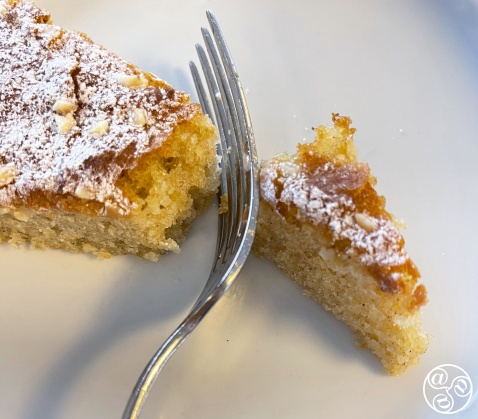
Huévar del Aljarafe sweet treats include torta de hornazo (almond cake) typically eaten on Resurrection Sunday. |
|
HUÉVAR DEL ALJARAFE
by Saskia Mier
Huévar del Aljarafe is located at the basin of the Guadiamar River and forms part of the Corredor Verde del Guadiamar, a protected natural area that connects Doñana with the Sierra Morena. It has about 2,800 inhabitants.
HISTORY
Marble shafts and ceramic vessels found suggest a Roman settlement once stood before Huévar del Aljarafe. It is during the Visigothic period that the town called, Erbas, was probably created. Later on the Moors converted the settlement into a working farm dedicated to agriculture with olive groves and fig trees.
The entire area was Re-conquered by, Fernando III, in the middle of the thirteenth century and shortly after; Alfonso X reserved almost all the settlement for the Crown (Corona). Later it was donated to the Castilian sailor, Ramón Bonifaz, and some men who had fought with him. Finally, it was ceded to the Council of Seville.
In the fifteenth century, the town passed by a stage of great prosperity, that diminished throughout the sixteenth century.
Hotels near Huévar del Aljarafe
Book Hotels near Huévar del Aljarafe
THINGS TO SEE
Iglesia de Nuestra Señora de la Asunción
The church was completed in 1510 with a simple Gothic style mixed with some Mudejar elements. There are vaults covering the whole of the temple, with underground passages that converge in a crypt that would have been a Christian refuge in the Moorish era. Located in Plaza Marqués de la Motilla.
Palacio de Villavelviestre
The Palace dates to the eighteenth century with a mixed entrance of brick and spire. The circular brick corner tower has unique horseshoe arch windows. Located on Calle José y Felipe Acuña.
Palacio de la Motilla
The Hacienda del Marqués de la Motilla stands out above all for its brick entrance. Its interior consists of part of an Arab mill, with parts still conserved such as the olive press. Located in Plaza del Marqués de la Motilla.
NATURAL AREAS
Paraje Natural Corredor Verde del Río Guadiamar
The natural park is located near a rich fountain of life, named "the river of princes" by the Moors. The river is born near Castillo de las Guardas in Sierra Morena, runs through Aljarafe, until the sands and pine forests of Doñana. It is rich in flora and fauna and the Guadiamar Cyclotouristic track, also suitable for hiking and on horse-back, shows the differences and diversity of the river. Located north-east of Huévar del Aljarafe.
GASTRONOMY
The most typical dish to be tasted in Huévar del Aljarafe is the caldereta de borrego, a lamb stew mainly eaten during the Winter and during the festival of San Sebastián. Other traditional dishes include, comida colorá (chickpea stew with pork and black pudding), migas (fried bread), tostón con sardinas (toasted homemade bread with sardines), bolo (similar to a tomato soup adding ingredients such as grapes, oranges, hard boil egg, melon and fish). Sweet treats include torta de hornazo (almond cake) typically eaten on Resurrection Sunday, torta de aceite (olive oil cake), torrija (eggy bread), leche frita (fried custard), poleá (similar to semola) and rosco de vino (sweet pastry).
FESTIVALS
Cabalgata Reyes Magos
Three Kings procession celebrated on the evening of 5 January.
Fiesta de la Caldereta y Festividad de San Sebastián
"Stew Festival" celebrated the 20 January.
Día de Andalucía
Celebrated the 28 Febuary.
Carnaval
Celebrated in February.
Semana Santa
Holy Week.
Fiesta en Honor de Nuestra Señora Virgen de la Soledad
Celebrated the 29 May.
Fiesta en Honor de Nuestra Señora Virgen de la Asunción
Celebrated the 15 August.
Romería y Fiesta en Honor de Nuestra Señora Virgen de la Sangre
Pilgrimage celebrated at the beginning of September.
NEXT PLACES
The next villages to Huévar del Aljarafe are Carrión de los Céspedes, Pilas and Benacazón.


